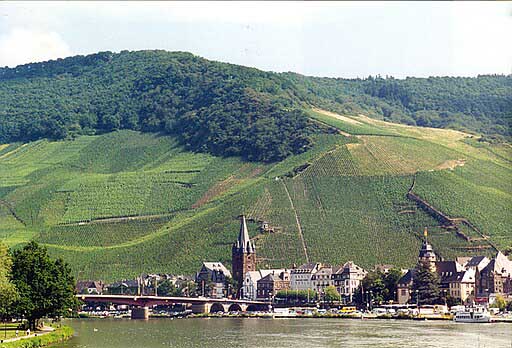This German Riesling Once Healed a Medieval Archbishop

Bernkasteler Doctor: Germany’s Legendary Riesling Vineyard
Nestled above the medieval town of Bernkastel on a steep, sun-soaked bend of the Mosel River, the Bernkasteler Doctor vineyard is tiny but its reputation is grandeur. It spans just over 3 hectares, yet it stands among the most esteemed Riesling sites in the world.
The Story & the Soil
According to lore, Archbishop Boemond II was cured of illness in the 14th century after drinking wine from this vineyard. Impressed, he dubbed it “the true doctor,” a title that’s stayed ever since. Over time, its prestige only grew—even royalty, like King Edward VII, is said to have taken the Doctor’s wine as a form of “medicine.”
The vineyard itself is a challenging masterpiece. The slope is steep, with south-southwest exposure that gives the vines plenty of sun, balanced by Mosel’s cooler influence. The soil is rich in slate—weathered Devonian slate—that brings mineral intensity and depth. Some vines are over a hundred years old, deeply rooted in this demanding terrain.

Berncasteler Doctor- “Doctor Wine”, CC BY-SA 2.0
The People Behind the Wine
Ownership is divided among several producers, notably Weingüter Wegeler and Dr. H. Thanisch. Thanisch has been run by women across five generations. Both producers handle very small yields and high labor inputs: up to 2,400 work hours per hectare annually, just to maintain the steep slopes, tend vines, harvest carefully, and craft wines with finesse.
What the Wines Taste Like & Why They’re Coveted
Doctor wines tend to show precision and minerality. Expect aromas of ripe stone fruits—pear, apricot—perhaps nectarine or white tea, tempered by slate, saltiness, cooling acidity, and an elegant backbone. Styles include Kabinett, Spätlese, and even GG (Grosses Gewächs), each offering different weight, sweetness, and aging potential. Even wines that are off-dry retain such purity and structure that they can evolve beautifully over decades.
Despite its size, the vineyard’s output is small—just several thousand bottles per vintage across all producers—which helps maintain its mystique and keeps prices elevated (usually in the mid-double digits to low triple digits, depending on the expression and producer).
 Previous Post
Previous Post Next Post
Next Post